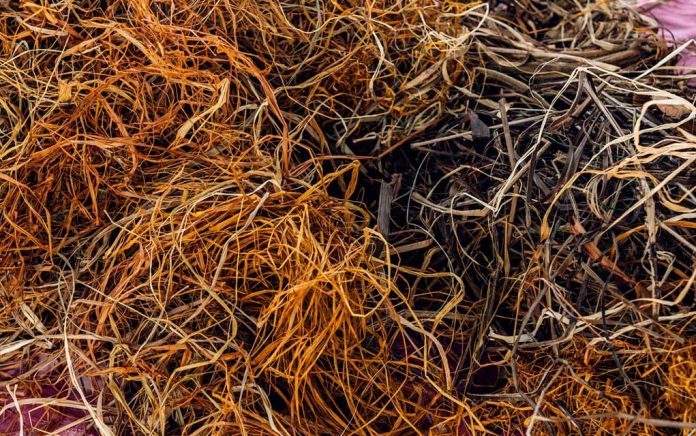(SurvivalDaily.com) – Rope is something that is easily overlooked in our everyday lives, but is essential in a survival situation. Some people even carry rope with them to go hiking, you never know if you’re going to need it. It’s always better to have something and not need it, rather than not having it and needing it.
But what happens when you run out? Or maybe you’ve lost your rope, whether it be you dropped it in the river, or you used it but have no way of retrieving it. Things like this can happen especially if you have to rappel down a cliffside. This is when knowing how to make your own rope from scratch comes in handy.
The main things you need to know when making your own rope are; which plants to use, how to use them effectively, and what steps to follow. A couple of things that need to be known about the plants you’re using are:
- Fiber– Every plant has different fiber content and make up. Some plants have long and thin fibers, while others are made of short and thick fibers. Most people think thicker fibers means stronger rope, this is not the case. Typically you want longer and thinner fibers, as these are easier to twist into rope. Fibers that are short and thick and may have less flex to them. Bark, grass, and stalk fibers are the ones you want.
- Starches– Starches are water-soluble, meaning they will dissolve in water. The nutrients, these give life to plants. Believe it or not — it can actually be better to use dead plants over live ones. This is because there are no starches in the fibers, therefore when they get wet they won’t lose any structure. Live plants should be boiled, washed and dried to ensure there is a little starch left as possible.
There are plenty of plants to make rope out of… just about any plant will do. But like most things, there are those who are the top of the class… brand names if you will. Yucca, dogbane, milkweed, western red cedar, and stinging nettle are all very good plants to use when making rope.
When using bark fibers such as the ones from western red cedar, you don’t use the actual bark itself. What you want is the inner bark of the tree. These fibers are typically very long and easier to twist into rope than shorter ones. Stalk fibers, while also long and strong, don’t quite match. They are, however, easier to gain access to than bark fibers. Grass fibers are generally weak and short, but can still make rope in a pinch as long as strength is not a big concern.
To get the fibers you need, there are a few options:
- Strip the inner bark out of a tree or wood-like plants. To do this you’ll first need to get through the outer bark, which can prove difficult at times. Using a knife or something similar, peel the outer bark off, exposing the inner bark (or the phloem or bast). From here, just peel the inner bark off in the longest lengths you can. These fibers are the strongest you can get and the best to use in the creation of a rope. Sometimes these fibers are tough and need to be broken down, which you can do by soaking them in water. Another good thing about this bast is it has low starch levels.
- If time is on your side or you’re not in too much of a rush, drying the plants yourself is another option available to you. This is done exactly how it sounds; just hang the plants up to dry so that the majority of starch is removed. When the plants are dried enough, simply smash the plants’ stem or stalk with a rock and scrape out the fibers.
- You can also use plants that are already dead and dried out. This is a great way to make rope from stalk and grass fibers. Plants that are already dead and dry have little to no starch present. You extract the fibers in the same manner as you would if you dried the plants yourself.
- With fresh plants, it’s a bit more difficult, but not impossible. You’ll need to boil the plants and wash them thoroughly. Doing this will get rid of the starch, and what you’re left with is basically nothing but the fibers. Make sure to follow this process all the way through, otherwise, you will have starch in the fibers and when your rope gets wet it will shrink. Never make your rope while the fibers are wet; you will run into the same problem where the fibers shrink and become weak.
Your next step is something called ‘buffing the fibers’. Depending on which fiber you’ve found or decided to use, you may be able to skip this part and go straight to wrapping and twisting your rope. The process of buffing fibers removes any leftover bark or woody material and softens the fibers so they become more flexible. You simply roll the fibers between your hands. Some people place them on their thigh and rub and roll them with their hands. They should eventually become thinner and fluffier. And no, thinner does not mean weaker. You actually want them to become thin so that they are easier to bend, twist, and wrap.
The last step is the wrapping or twisting of your fibers, it doesn’t matter what kind of fiber you use as this will work for all of them. The first thing you need to do is make sure all of your fibers are roughly the same length. Making the rope the thickness you want depends on how many fibers you use, for a thinner rope six is enough, for thicker ropes use more fibers.
Next, you’ll need to tie one end of all your material together, once completed divide your fibers by splitting the group down the middle, making sure the two halves are as equal as possible. You should end up with a ‘V’ shape with the ends tied together forming the point. For the next step take one section in each hand and begin to twist all the fibers in the same direction both tightly and evenly. The direction of which you twist them doesn’t matter as long as you are twisting them the same way. As you twist the two strands will begin to wrap around each other forming a rope.
Splicing more fibers in is essential in making your rope longer, but it’s just as easy. As you get close to the end of your bundle, grab two more sections that are the same thickness as the original two. Overlap the tails from the originals with the head of the new sections, making sure the heads actually extend beyond the tails to ensure a good anchor. Continue twisting in the same direction as before, eventually the new and old sections will be wrapped together giving you additional length.
Once you’ve got the length of rope you want to tie a knot at the end to avoid the fibers from separating and ruining the rope. There will be excess especially where splices occurred, you’ll need to trim this excess off. To make an even stronger rope, repeat the entire process and twist the two ropes together.
We can’t always be prepared, but knowing something like this puts you in a better position than not knowing. Knowledge is power, in this case, the power to be prepared.
Have you ever tried to make rope on your own? Have you ever used rope to survive in the wild? Reply to your email and let us know, we would love to hear from you!
Copyright 2021, SurvivalDaily.com

















